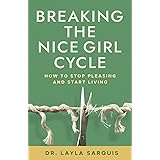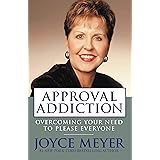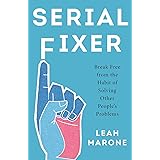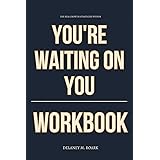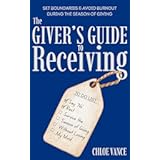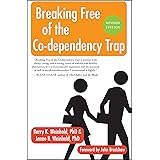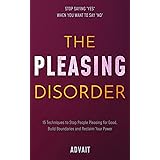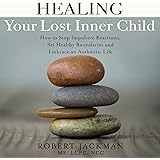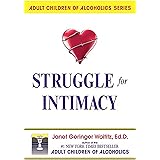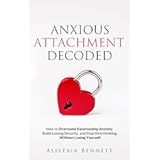The allure of a new purchase can be powerful. For some, shopping becomes more than a hobby. It transforms into a compelling, often secretive, need. The accompanying video delves into the lives of individuals wrestling with compulsive shopping. It highlights the devastating impact this condition can have. This deep dive uncovers a serious problem that affects many.
Often, this behavior starts innocently. It can quickly spiral out of control. Many people find themselves trapped in cycles of debt. They also face emotional distress. This article explores the nature of shopping addiction. We will look at its signs and its far-reaching consequences.
Understanding Compulsive Shopping (Oniomania)
Compulsive shopping is a recognized behavioral addiction. It is also known as Oniomania. This condition involves excessive, uncontrollable urges to buy. These purchases are often made regardless of need. The act of shopping provides a temporary emotional lift. However, it is typically followed by guilt and financial strain.
Normal shopping differs significantly. It serves a practical purpose. Shoppers buy items they need or genuinely desire. Compulsive shoppers buy impulsively. They often acquire items they never use. The video shows Dipna, for instance. She spent £9,000 just on shoes. Many items still had their labels on.
The Psychology Behind Shopping Addiction
This disorder often has deep psychological roots. It is not just about material desires. Many individuals use shopping as a coping mechanism. They might be dealing with stress or anxiety. It can also mask feelings of loneliness or inadequacy. The temporary high from a purchase offers an escape. This escape helps them avoid painful emotions.
Ebony, featured in the video, illustrates this. She unconsciously used shopping to avoid processing a past miscarriage. She found comfort in accumulating bargains. This allowed her to delay confronting difficult memories. This pattern highlights a significant issue. Shopping fills an emotional void.
The Financial Avalanche of Compulsive Buying
The financial consequences of compulsive shopping are severe. They can lead to overwhelming debt. Many sufferers rely heavily on credit cards. This provides instant gratification. It also delays the financial reckoning. Dipna accrued £7,500 in credit card debt. This debt was from high-end purchases. Her expensive items included a £3,000 blazer and a £1,600 bag. She also purchased a £700 wallet and £200-£250 earrings.
Ebony also accumulated significant debt. She had £6,000 on credit cards. Her purchases were cheaper, but numerous. She once bought three pairs of boots for a tenner. She even purchased nine pairs of shoes in one spree. The cost per item may be low. However, the sheer volume creates massive financial strain. This is a common characteristic of shopping addiction.
The Cycle of Debt and Shame
Compulsive shoppers often find themselves trapped. They are caught in a cycle of spending. They acquire more debt. This leads to increased stress and guilt. To cope, they might shop more. This deepens the problem further. It becomes a self-perpetuating loop. The desire for a new car for Dipna, for example, could escalate her financial issues.
The secrecy surrounding their habits intensifies the shame. They may hide purchases from family. They often lie about their spending. This behavior creates emotional distance. It erodes trust in relationships. Financial secrecy is a clear warning sign.
Beyond the Bargain: Emotional and Psychological Roots
The roots of compulsive shopping run deep. It is rarely just about liking nice things. These behaviors are often driven by internal struggles. Low self-esteem is a common factor. Depression and anxiety also play significant roles. Shopping can offer a temporary sense of control. It can also provide a feeling of power or excitement. These feelings are often missing in other areas of life.
Some individuals shop to alleviate boredom. Others seek a rush from the purchase itself. The hunt for a bargain provides an adrenaline spike. The video features Ebony, who said shopping “totally beats the buzz of shopping” when confronted with deep emotions. This suggests a powerful emotional connection to buying. This connection is often unhealthy.
Impact on Mental Well-being
Compulsive shopping severely affects mental health. It can lead to increased depression. Anxiety levels often rise. The inability to stop creates feelings of helplessness. Dipna admits feeling depressed when she cannot shop. This indicates a strong dependency. Her statement, “There’d be no life without shopping,” reveals the depth of her struggle. Such dependency is a hallmark of addiction.
The disorder can also contribute to feelings of isolation. Individuals may withdraw from social situations. They might spend more time shopping alone. They feel misunderstood or judged. This further exacerbates their emotional distress. Professional support becomes crucial for recovery.
The Ripple Effect: Impact on Relationships and Family
The effects of shopping addiction extend beyond the individual. It strains family relationships. Partners and children often feel neglected. They might feel pushed out. This creates resentment and conflict. Karen, a partner in the video, expresses feeling “pushed out.” This is a common complaint. The family’s financial stability also suffers.
Children can internalize these patterns. They may develop their own unhealthy habits. The household environment becomes stressful. Trust can break down completely. Open communication is essential. However, it is often hindered by secrecy and denial.
Restoring Trust and Connection
Healing family relationships requires effort. It needs honesty and commitment. The compulsive shopper must acknowledge the problem. They need to seek professional help. Family therapy can be beneficial. It provides a safe space for dialogue. It helps rebuild trust and understanding. Support groups also offer valuable resources. They connect individuals with shared experiences.
Understanding the underlying causes helps family members. They learn to differentiate the person from the disorder. This fosters empathy. It moves toward constructive solutions. This approach supports long-term recovery for everyone involved.
Recognizing the Signs of Compulsive Buying
Identifying compulsive shopping is the first step. Look for specific patterns and behaviors. These signs indicate a deeper issue. Early recognition can prevent more severe problems. It allows for timely intervention and support.
- **Excessive Spending:** This includes buying items not needed. It also covers spending beyond one’s budget. Dipna’s £1,500 spree is a stark example.
- **Accumulation of Unused Items:** Many purchased goods remain unworn or unopened. Ebony’s “thousand pairs of shoes” often went unused.
- **Financial Distress:** Mounting credit card debt is a significant indicator. Hiding bills or financial statements also points to a problem.
- **Impulse Purchases:** Shopping without planning is common. The “bargain” impulse often overrides rational thought. Ebony describes seeing a bargain and then buying.
- **Secretiveness:** Hiding purchases from family members is a key sign. Storing items in secret places also indicates a problem.
- **Emotional Dependency:** Shopping becomes a mood regulator. It is used to cope with stress or sadness. Dipna admits feeling depressed without shopping.
- **Loss of Control:** An inability to stop shopping, even when consequences are clear. The “little voice inside” often dictates actions.
- **Impact on Daily Life:** Neglecting responsibilities to shop. Cancelling work, as Dipna did, shows severe impact.
When to Seek Help
If these signs resonate, seeking help is crucial. Compulsive shopping is a serious condition. It requires professional intervention. Acknowledge the problem first. This is a brave and vital step. Help is available to manage this challenging disorder.
Various resources can provide support. Therapists specializing in addiction can help. Financial counselors can assist with debt management. Support groups offer a community for healing. The journey to recovery is possible. It starts with one committed step.
Moving Towards Control and Support for Shopping Addiction
Addressing compulsive shopping requires a multi-faceted approach. It involves understanding triggers. It also requires developing coping strategies. Professional help is often necessary. This support can guide individuals toward healthier behaviors. It empowers them to regain control over their lives.
Cognitive Behavioral Therapy (CBT) is highly effective. It helps identify and change problematic thought patterns. This therapy teaches healthier responses to triggers. Group therapy can also be beneficial. It provides a supportive environment. Shared experiences foster understanding and reduce isolation. These methods equip individuals for lasting change.
Building a Support System
A strong support system is vital for recovery. This includes family and friends. They need to understand the nature of the addiction. They can offer encouragement and accountability. Financial planning is also a key component. Working with a financial advisor helps manage debt. It creates a realistic budget. This reduces financial stress. It also provides a clear path forward. Learning to live within means is essential for long-term health. Overcoming compulsive shopping is a journey. It requires patience and consistent effort. However, with the right tools and support, it is a journey towards freedom.


